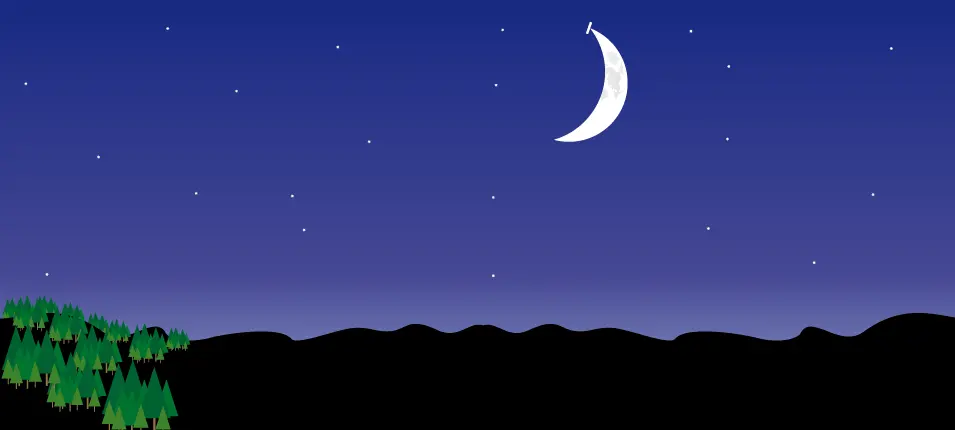Crescent Moon Compass
Introduction
I recently learned from a book that we could find an estimate of the south from a crescent moon, assuming the observer is at the northern hemisphere. Because I have a good impression about the analog watch compass which uses the sun and a watch to find the rough south, I thought the crescent moon compass would find the south with a small error that is close to the analog watch compass. However, it turns out that the error of a crescent moon compass can be much larger than a analog watch compass.
In this blog post, I would like to quickly discuss the crescent moon compass, its theory and limitations.
Crescent Moon Compass
The crescent moon compass determines the rough south using the method as simple as follows.

The basic principle behind this method is that the sun, the earth, and the moon roughly stays at the same plane, and both sun and moon rise in the east and set in the west. So the horizontal line of the crescent moon should indicate the east and the west on the earth projected on the moon. Furthermore, two tips of a crescent moon should indicate the north and the south on the earth projected on the moon.
From the above illustration, it gives the people an illusion that the two tips of a crescent moon always point to a roughly the same point in the horizon. But this is not the case at all. From the video below, we could see how large the error is as the crescent moon moves.
The reason behind this is that the crescent moon compass directions are the earth directions projected on the moon. Suppose the moon is stationary and the earth is rotating, the two tips of a crescent moon point to the exact south only when the moon is closest to the observer on the earth. When the moon moves away from the observer, the error becomes larger and can go up to 90 degrees (the error of 90 degrees happens when the moon just rises and sets).
Conclusions
The natural crescent moon compass can tell the observer at the north hemisphere the rough directions to the south. However, the error to the exact south will be very large unless the moon is the closest to the observer in the night.
References
Crescent Moon Compass